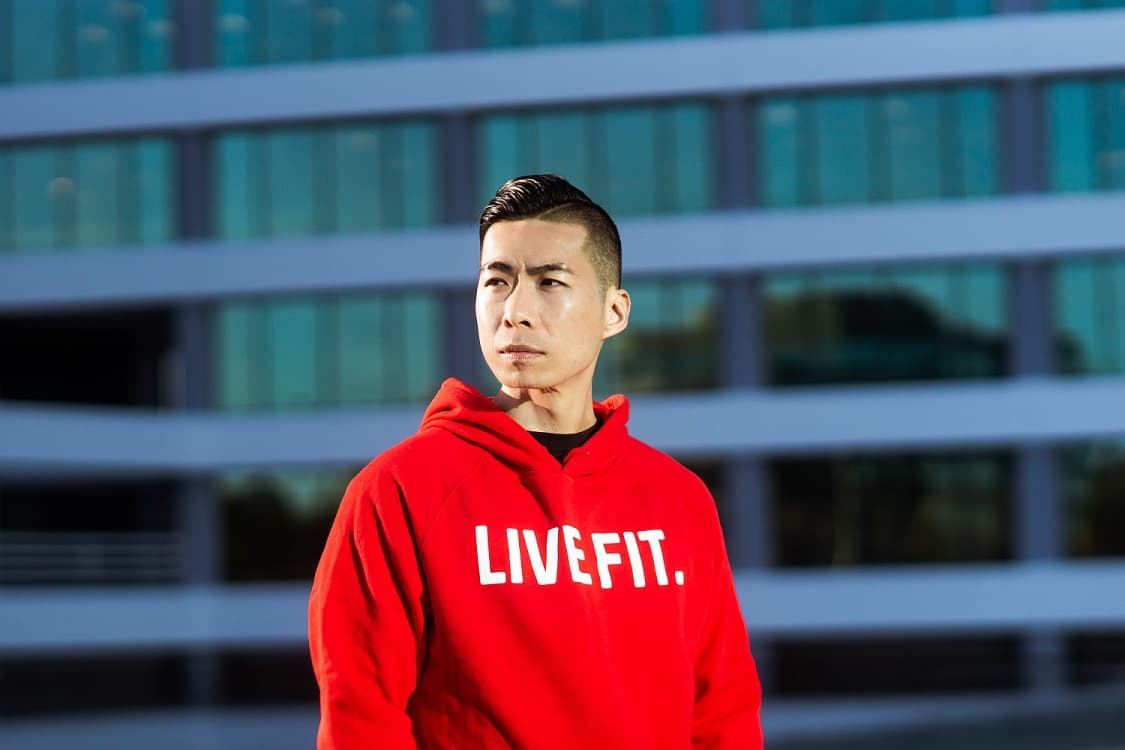What To Do If You're "Skinny Fat" (Bulk or Cut?)
Introduction
Welcome, dear readers, to this enlightening discourse on a topic that is often overlooked and misunderstood - being "skinny fat." In today's society, where beauty standards are ever-evolving and fitness trends dominate social media feeds, it is crucial to shed light on the intricacies of this peculiar condition.
Definition of "Skinny Fat"
Before we delve deeper into the subject matter at hand, let us first define what it truly means to be "skinny fat." Contrary to what the phrase might suggest, it does not imply being both skinny and fat simultaneously. Rather, it refers to individuals who appear slender or slim but possess a higher body fat percentage than desired. This phenomenon occurs when a person lacks muscle tone or has relatively low muscle mass in relation to their overall body weight. It is essential to understand that being "skinny fat" is not solely determined by one's appearance or body weight alone. In fact, body composition plays a pivotal role in identifying this condition accurately. While the weighing scale may suggest an acceptable number, the distribution of muscle and fat within one's body can tell a completely different story. It is this delicate balance between muscle mass and body fat that categorizes someone as "skinny fat."
Common Misconceptions about Being Skinny Fat
In our quest for physical perfection and societal acceptance, we often fall prey to various misconceptions regarding the state of being skinny fat. Let us now debunk these misconceptions one by one:
- Misconception 1: Skinny Fat Individuals Are Healthy: Many assume that because skinny fat individuals don't appear overweight or obese, they must automatically have excellent health.
However, internally they may still possess high levels of visceral fat (fat surrounding organs), which can lead to a host of health issues, including metabolic syndrome and cardiovascular problems.
- Misconception 2: Fat Loss Is the Only Solution: Another common belief is that the only way to overcome being skinny fat is by focusing solely on shedding body fat.
While losing excess fat is indeed crucial, it's equally important to build muscle mass. This dual approach helps improve body composition and creates a more aesthetically pleasing physique in the long run.
- Misconception 3: Skinny Fat Can Be "Fixed" Overnight: Sadly, there are no quick fixes or magical potions that can instantly transform a skinny fat individual into a muscular specimen. Achieving a healthy and balanced physique requires patience, discipline, and consistent effort over an extended period.
- Misconception 4: Cardio Is Sufficient for Transformation: Many individuals mistakenly believe that engaging in copious amounts of cardio exercises alone will remedy their skinny fat condition. While cardiovascular activities contribute to overall health and calorie burn, they do little to build muscle mass.
A comprehensive resistance training program is necessary for achieving optimal results.
- Misconception 5: One Size Fits All Approach: Each person's body is unique, and what works for one individual may not work for another.
It's vital to listen to your body, understand your goals, and tailor your approach accordingly. Flexibility in both mindset and methodology is key when addressing the intricacies of being skinny fat.
Now that we have laid out the groundwork by defining "skinny fat" and exploring common misconceptions surrounding it let us journey further into this realm of physical transformation with utmost clarity and understanding.
Understanding the Skinny Fat Phenomenon
Body composition and its impact on appearance
The term "skinny fat" is often used to describe individuals who appear slim or even underweight, but lack muscle tone and have a higher percentage of body fat. Achieving a lean and muscular physique is not just about weight, but also about body composition. It's essential to understand that body composition plays a crucial role in determining how we look physically. Even if you have a low overall weight, a higher percentage of body fat can overshadow any muscle definition, making you appear soft or out of shape.
Factors contributing to being skinny fat (e.g., genetics, lifestyle)
Several factors contribute to the development of the skinny fat physique. Genetics can play a significant role in determining our body type and how we distribute fat and muscle mass. Some individuals may naturally have more propensity for storing excess fat around their midsection or other trouble spots. Additionally, our lifestyle choices such as sedentary behavior, poor diet, lack of exercise, or excessive cardio without strength training can all contribute to being skinny fat.
Health risks associated with being skinny fat
Being skinny doesn't necessarily equate to being healthy. Carrying excess visceral fat—the type that surrounds vital organs—can pose serious health risks regardless of your weight or overall appearance. Skinny fat individuals may have an increased risk for metabolic disorders like diabetes, heart disease, high blood pressure, and compromised organ function. Moreover, having low muscle mass can result in weaker bones and decreased mobility over time. It's important to remember that addressing the skinny fat phenomenon goes beyond aesthetics; it’s primarily about improving overall health and well-being. To combat this common issue effectively, let's explore whether bulking or cutting is the right approach for you in order to achieve your desired physique and optimal health.
Assessing Your Goals and Priorities
The Ideal Physique: Decoding Your Desires
Ah, the eternal quest for the perfect body. It's important to take a moment and consider what your ideal physique looks like to you. Do you dream of sculpted abs that could rival Michelangelo's David? Or are biceps like bowling balls more your style? Maybe you simply want to feel healthy, strong, and confident in your own skin. Take some time to visualize this ideal version of yourself and let it guide your decision-making process.
Bulk or Cut: The Great Debate
Once you have a clear picture of your desired physique, it's time to ponder the great bulk vs. cut debate. Are you looking to pack on muscle mass and embrace those glorious gains? Or would you prefer to shed unwanted body fat and reveal those hidden muscles? Understanding where your priorities lie will greatly impact which path you choose.
Muscle Gain vs. Fat Loss: Personal Preferences MatterWhen it comes down to the nitty-gritty, personal preferences play a significant role in determining whether muscle gain or fat loss is more appealing to you. Some individuals relish the idea of bulking up, enjoying an increase in strength and size as they hit new personal records at the gym. On the other hand, shedding excess body fat can lead to improved definition and enhanced muscular visibility—a leaner silhouette that turns heads on a beach stroll.
Prioritize Sustainability for Long-Term Success
While it's tempting to focus solely on short-term aesthetic goals, it is crucial not to overlook long-term sustainability and overall health. Consider whether an intense bulk or cut regimen aligns with your lifestyle choices and commitments outside of fitness. Strive for balance by opting for an approach that allows flexibility without jeopardizing your mental and physical well-being.
The Power of Mindset: Embracing a Holistic Approach
It's important to adopt a holistic mindset when assessing your goals and priorities. Fitness shouldn't be solely about physical appearance but also about nourishing the mind and soul. Prioritize overall wellness by setting realistic expectations, understanding that progress takes time, and valuing the journey as much as the destination. Remember, it's not just about looking good; it's about feeling good too. Assessing your goals and priorities is a critical step before embarking on any fitness journey. Define your ideal physique, whether that involves bulking up or cutting down on body fat. Consider your personal preferences when deciding between muscle gain or fat loss. However, always prioritize long-term sustainability and overall health to ensure a well-rounded approach to fitness. Embrace a holistic mindset that values both physical and mental well-being throughout your journey towards achieving the best version of yourself.
The Bulk vs Cut Dilemma: Pros and Cons
When it comes to tackling the "skinny fat" dilemma, you may find yourself torn between two main approaches: bulking or cutting. Both strategies have their pros and cons, and deciding which path to take requires careful consideration of your goals, preferences, and overall health.
Bulking: Gaining muscle mass while accepting some fat gain
Bulking is a popular choice for many skinny fat individuals looking to transform their physique. The primary goal of bulking is to build muscle mass by consuming a caloric surplus. This approach allows your body to have enough fuel for intense workouts and muscle growth. But what are the benefits and potential challenges of bulking? Benefits of bulking for skinny fat individuals:
- Muscle development: bulking provides the necessary environment for muscle growth, allowing you to fill out your frame and improve overall body composition.
- Strength gains: alongside increased muscle mass comes enhanced strength, enabling you to perform better in various physical activities.
- Metabolic boost: building more lean muscle can help rev up your metabolism, leading to increased calorie burn even at rest.Potential challenges and drawbacks of bulking:
- Fat gain: While bulking promotes muscle growth, it also typically leads to some degree of fat gain. It's essential to accept this trade-off as part of the process.
- Dietary discipline: Properly executing a bulk requires careful monitoring of calorie intake and macronutrient distribution. It can be challenging to strike the right balance and avoid excessive fat gain.
- Mental adjustment: For those who have always been conscious of their body weight and appearance, intentionally gaining weight can be mentally challenging. It's important to stay focused on long-term goals and not become overly fixated on transient changes.
Cutting: Losing body fat while preserving muscle mass
The alternative approach for skinny fat individuals is cutting, which prioritizes reducing body fat while maintaining as much muscle mass as possible. This strategy involves being in a caloric deficit, where you consume fewer calories than you burn. Let's explore the benefits and potential challenges of cutting: Benefits of cutting for skinny fat individuals:
- Fat loss: cutting helps shed excess body fat, ultimately revealing more definition and tone in your muscles.
- Muscle preservation: by incorporating resistance training and adequate protein intake into your cutting plan, you can minimize muscle loss during the calorie deficit phase.
- Aesthetic improvement: cutting can lead to a leaner physique, enhancing your overall appearance and boosting self-confidence.Potential challenges and drawbacks of cutting:
- Slower muscle growth: being in a caloric deficit may limit your ability to build significant amounts of new muscle during the cutting phase.
- Dietary adherence: Sticking to a strict calorie deficit while still meeting nutritional needs requires discipline and careful meal planning. This can be especially challenging for some individuals.
- Mental resilience: During a cut, it's natural to experience periods of hunger and cravings. It's important to have strategies in place to manage these challenges without compromising your goals.
Ultimately, whether you choose bulking or cutting depends on your personal preferences, specific goals, and the resources at your disposal. Remember that everyone's journey is unique, and it may take some trial and error to find the approach that works best for you. Consider consulting with a fitness professional or nutritionist who can provide guidance tailored to your specific needs.
Evaluating Your Body Composition
Measuring body fat percentage
One crucial step in understanding your body composition when you're skinny fat is determining your body fat percentage. This measurement tells you the proportion of your body weight that is composed of fat. It's important because it helps differentiate between muscle mass and excess fat. Several methods can be used to estimate body fat percentage, each with its own strengths and limitations.
Different methods for assessing body composition
1. Skinfold calipers: This method involves using calipers to measure subcutaneous fat in specific areas of the body, such as the triceps and abdomen. The measurements are then plugged into a formula to estimate overall body fat percentage. While this method is affordable and widely accessible, it does require some skill to ensure accurate results. 2. Bioelectrical impedance analysis (BIA): BIA uses a device that sends a low electrical current through your body, measuring the resistance encountered by this current. Since muscle tissue conducts electricity better than fat, the device can estimate the amount of lean mass versus fat mass in your body. However, factors like hydration levels can affect its accuracy. 3. DEXA scan: A dual-energy X-ray absorptiometry (DEXA) scan provides a highly accurate measurement of bone mineral density as well as an assessment of total body composition. It measures both lean tissue and fat mass distribution across different regions of your body with exceptional precision. However, DEXA scans are expensive and not easily accessible for everyone. 4. Bod Pod: The Bod Pod uses air displacement plethysmography to analyze overall body composition based on lung volume measurements before and after entering an egg-shaped chamber. It calculates a person's total volume and density to estimate their lean mass versus adipose tissue accurately.
Interpreting the results
Once you have your body fat percentage measurement, it's essential to understand what the numbers mean. Typically, body fat percentage guidelines can vary depending on gender and age. For instance, a healthy range for males might be around 10-20% body fat, while females may fall within 18-28%. However, optimal ranges can differ based on individual goals and preferences. Remember that body fat percentage is just one piece of the puzzle when evaluating your physique. It's equally important to consider your overall health, strength, and personal satisfaction with your appearance. Use the measurement as a tool to assess progress and make informed decisions about whether to bulk or cut based on your specific objectives. It's worth noting that body composition assessments have their limitations. Factors like hydration levels, glycogen storage, food consumption timing, and other variables can affect results. Therefore, it's advisable to take multiple measurements over time rather than relying solely on a single assessment. Additionally, remember that these measurements are not an absolute reflection of your worth or fitness level; they are merely tools to guide you in achieving your desired physique. By understanding how different methods measure body composition and interpreting the results accurately within their respective contexts, you'll be better equipped to make informed decisions about whether bulking or cutting is appropriate for you in addressing the skinny fat dilemma. Remember that everyone's journey is unique—embrace the process of self-discovery as you strive for a healthier and more confident version of yourself.
Designing a Bulking Plan
Caloric Surplus: Determining Your Daily Caloric Intake
When it comes to bulking, one of the fundamental factors to consider is your caloric intake. To build muscle, you need to consume more calories than your body burns. Calculating your maintenance calories is the first step. This can be done using online calculators or consulting with a nutritionist or dietitian who can provide specialized guidance. Maintenance calories refer to the amount of energy needed to maintain your current weight. Once you have this number, you can establish a surplus for muscle growth.
Calculating Your Maintenance Calories
To calculate your maintenance calories accurately, take into account your age, weight, height, gender, and activity level. It's crucial to be honest about how active you are throughout the day since this affects the number of calories you burn. Remember that everyone's metabolism and energy expenditure are unique, so these calculations provide a starting point rather than an infallible equation.
Establishing a Surplus for Muscle Growth
Once you have determined your maintenance caloric intake, it's time to establish a caloric surplus for muscle growth. A surplus of around 250-500 calories per day is generally recommended for gradual and sustainable muscle gain without excessive fat accumulation. However, keep in mind that individual preferences and goals may vary. It's essential to strike a balance that allows for both muscle growth and minimizing unnecessary fat gain.
Macronutrient Distribution: Optimizing Protein, Carbs, and Fats Intake
Optimizing macronutrient distribution plays a significant role in supporting muscle growth during bulking phases. Protein should be prioritized as it provides the building blocks necessary for muscular repair and development. Aim for approximately 1 gram of protein per pound of body weight. Carbohydrates are crucial for providing the energy needed to fuel your workouts and support muscle glycogen stores, while healthy fats aid in hormonal regulation and overall health.
Importance of Protein in Muscle Building
Protein is the MVP when it comes to building muscle. It contains essential amino acids that act as the building blocks for new muscle tissue. Consuming an adequate amount of protein is vital to stimulate muscle protein synthesis, which is necessary for muscular growth. Include high-quality protein sources like lean meats, poultry, fish, eggs, dairy products, legumes, and plant-based alternatives in your diet.
Carbohydrates and Fats Considerations
Carbohydrates provide your body with readily available energy during intense workouts and support overall performance. Focus on complex carbohydrates such as whole grains, fruits, vegetables, and legumes that offer essential nutrients along with fiber for optimal digestion. When it comes to fats, prioritize sources like avocadoes, nuts, seeds, olive oil, and fatty fish rich in omega-3 fatty acids. These healthy fats contribute to hormone production and help maintain overall health.
Resistance Training Program: Building Strength
To make the most out of bulking and build lean muscle mass effectively, incorporating a well-structured resistance training program is crucial. This should include compound exercises targeting major muscle groups such as squats, deadlifts, bench presses, rows, and overhead presses. Focus on progressive overload, gradually increasing weights or repetitions to continually challenge your muscles. Aim for a balanced routine that targets each muscle group with appropriate intensity and allows sufficient time for recovery.
Conclusion
Designing a bulking plan requires careful consideration of caloric intake, macronutrient distribution, and resistance training. By determining your daily caloric surplus, optimizing protein, carbohydrates, and fats intake, and engaging in a well-structured resistance training program, you can effectively achieve your muscle growth goals. Remember to stay consistent and patient on this journey. Building a strong, muscular physique takes time and dedication. Embrace the process, stay committed, and celebrate the small victories along the way. With the right plan and mindset, your skinny fat days will become a distant memory as you transform into a stronger, more confident version of yourself.
About The Author


Get your macronutrients breakdown
Fill out the form below to get a preview of your recommended daily calorie and macronutrient breakdown.

Reverse Diet To Lean Bulk - Macros Included
Reverse Diet To Lean Bulk - Macros Included Introduction to Reverse Dieting Welcome, fitness enthusiasts! Today, we embark on an exciting journey in...

Burn More Calories Than You Eat? - Calories In Vs Out
Burn More Calories Than You Eat? - Calories In Vs Out Introduction Losing weight can seem like an overwhelming task, filled with fad diets and confl...



